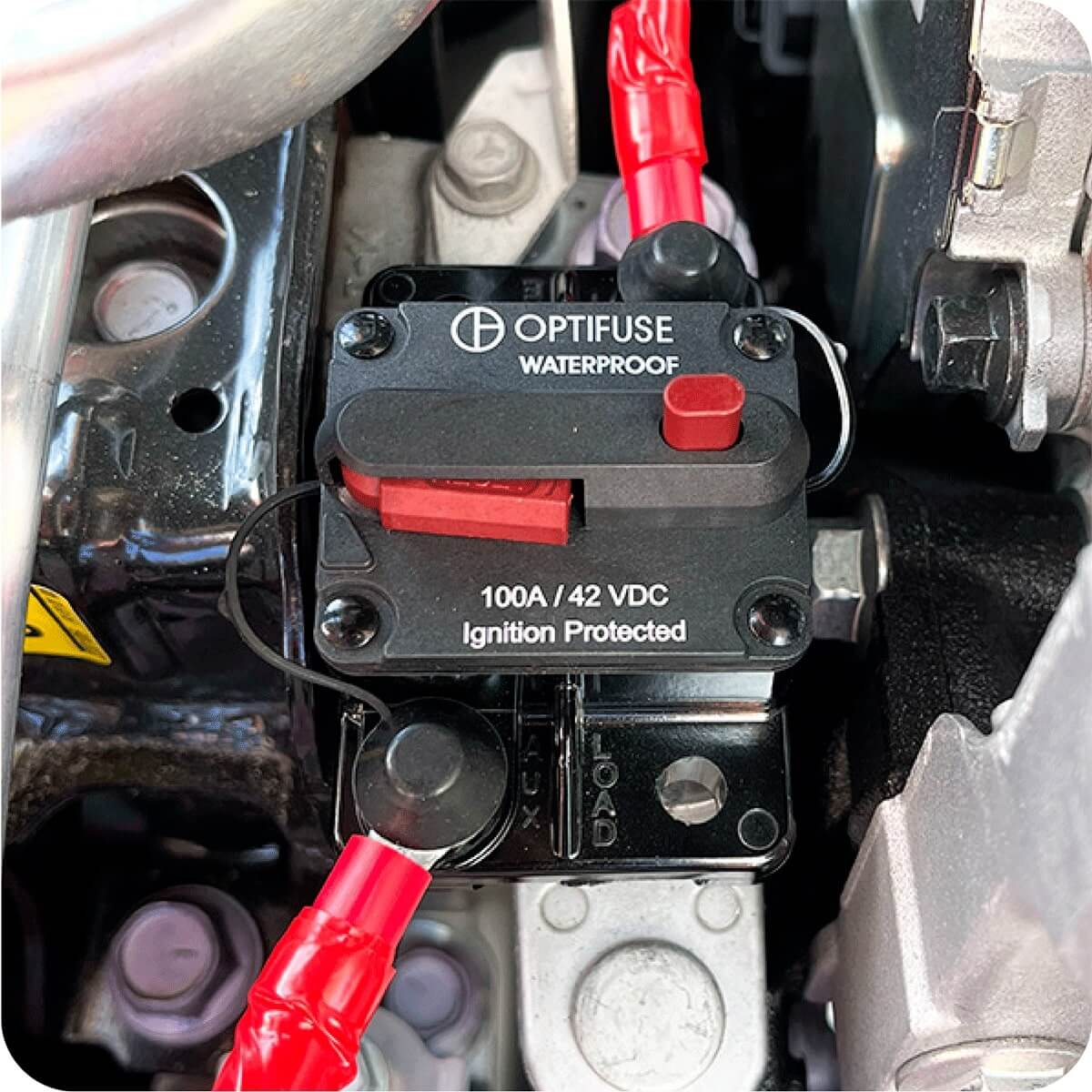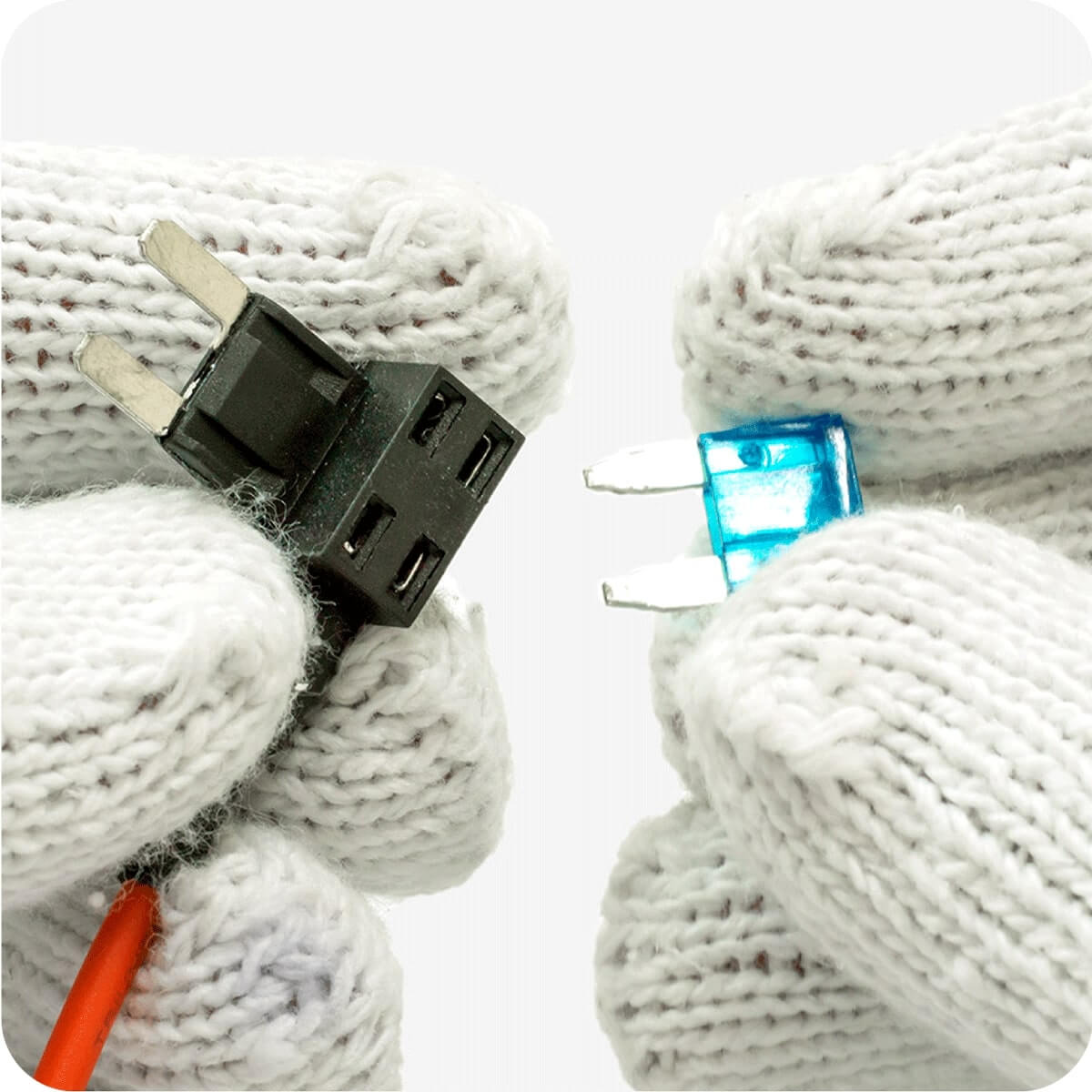Automotive blade fuses manufacturer and distributor
Discover our selection of automotive blade fuse types
Blade fuse: what is it?
A blade fuse is an electrical component that protects wiring by disconnecting the circuit when excessive current is detected. It safeguards against overcurrent and short circuits, preventing damage to electrical components and wiring.
This is how an automotive blade fuse works
An automotive blade fuse prevents overcurrent and short circuits from damaging the wires and electrical devices it protects. When excessive current flows through the fuse, it generates heat, causing the fuse link to melt. This breaks the circuit connection, cutting off power and protecting the rest of the electrical system.
The importance of the correct operation of an automotive blade fuse
The correct operation of an automotive blade fuse is important because it protects against overcurrent and short-circuiting, preventing potential fires, damage to electrical components, and ensuring the reliability of the vehicle’s electrical systems. Proper fuses help maintain safety and functionality and make maintenance easier.
Principal applications of blade fuses in the automotive sector
-
Blade Fuses for Cars:
Blade fuses in passenger vehicles protect various electrical circuits in passenger vehicles, including those for lighting, heating, air conditioning, and infotainment systems. -
Blade Fuses for Recreational Vehicles:
Blade fuses in recreational vehicles safeguard electrical systems that power additional features such as camper amenities, auxiliary lighting, and power outlets. -
Blade Fuses for Heavy-Duty Vehicles:
Blade fuses in heavy-duty vehicles protect robust electrical systems in trucks, buses, and construction equipment, including engine management and hydraulic controls. -
Blade Fuses for Emergency Vehicles:
Blade fuses in emergency vehicles protect the complex electrical systems in vehicles like ambulances, fire trucks, and police cars, which have specialized equipment and high-power demands. -
Blade Fuses for Marine Vehicles:
Blade fuses in marine vehicles safeguard electrical systems on boats and ships, including navigation lights, onboard electronics, and pumps.
FAQs
What are the different types of automotive fuses?
- Automotive Blade Fuses: Commonly used in modern vehicles, these include standard, mini, and micro blade fuses. They have a plastic body with metal prongs and protect various electrical circuits.
- Automotive Link Fuses: These are designed for high-current applications, featuring a larger and more robust construction compared to standard blade fuses. They provide heavy-duty protection for circuits that handle higher power levels.
- Automotive Bolt-On Fuses: Designed for high-current applications, these fuses are mounted with bolts and are used in heavy-duty and high-power circuits.
- Automotive Glass Fuses: An older type of fuse with a glass tube and metal wire inside. They are less common in modern vehicles but were used in older models for circuit protection.
Which type of fuse are commonly used in cars?
Automotive Blade Fuses are the most commonly used type of fuse in cars. They come in various sizes, including standard, mini, and micro blade fuses, and are used to protect a wide range of electrical circuits within the vehicle.
What are the smallest car fuses called?
The smallest car fuses are called micro fuses. They include Micro2 and Micro3 fuses, which are designed for compact fuse panels in newer vehicles.
What do the fuse colors mean?
Blade fuses are color coded to allow you to easily identify each amperage. The standard color code is as follows:
Red: 10 amps / Blue: 15 amps / Yellow: 20 amps / Green: 30 amps / Orange: 25 amps / Blue Green: 35 amps / Orange: 40 amps
Red: 50A amps (Maxi Style Only) / Blue: 60A amps (Maxi Style Only) / Tan: 70A amps (Maxi Style Only) / Clear: 80A amps (Maxi Style Only) / Violet: 100A amps (Maxi Style Only)
These colors can vary slightly by manufacturer, so always check the fuse’s rating for accurate information.
What does the current rating of a fuse indicate?
The current rating of a fuse indicates the maximum amount of electrical current the fuse can safely carry before it blows or disconnects the circuit. This rating is crucial for ensuring that the fuse will protect the electrical system by interrupting the flow of current if it exceeds a safe level, thereby preventing damage to the circuit or potential hazards like overheating and fires.
What amp fuse should I use for my application?
Fuses should be sized to 135% of the full-load steady-state current of your circuit. If a fuse rating of 135% isn't available, use the next standard size up. For example, for a 10A circuit, calculate 10A * 135% = 13.5A. Since 13.5A is not a standard fuse size, you would use the next available size, which is 15A.
Do I want a fast or slow fuse?
Choosing between fast or slow blow fuses depends on your application:
- Fast Blow Fuses: These are designed to respond quickly to sudden surges in current. They are ideal for sensitive electronic devices where even brief overcurrent conditions need immediate protection.
- Slow Blow Fuses: These allow a temporary overcurrent to pass through, such as during the startup phase of motors, capacitors, or fans. They are suited for applications with a high inrush current that is normal during initial startup but not indicative of a fault.
Select the type based on whether your application needs quick response to current spikes or can tolerate brief overcurrent conditions.
See Also

Circuit Breakers
A comprehensive range of automotive, marine grade and line voltage circuit breakers to protect applications where resettability is needed.

Fuse Holders, Blocks and Accessories
Installing circuit protection is easy with our wide variety of customizable fuse holders, sturdy fuse blocks, and compact fuse clips.